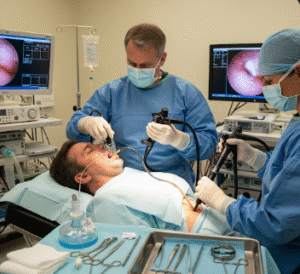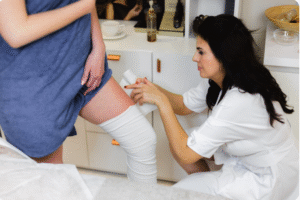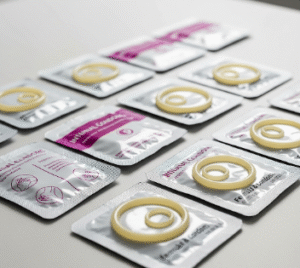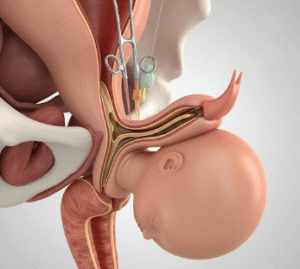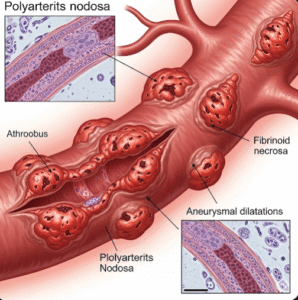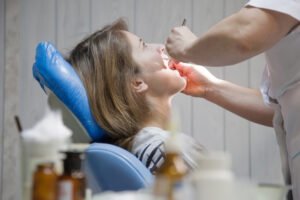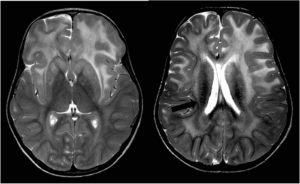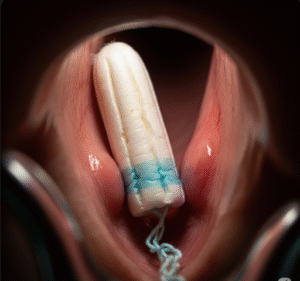What it is
Vestibulodynia is a type of vulvodynia that causes chronic pain, burning, or stinging in the vaginal vestibule—the area around the vaginal opening. Pain is usually triggered by touch, pressure, or penetration, making intercourse, tampon use, or even sitting for long periods uncomfortable.
Key points about vestibulodynia:
• Pain is localized at the vaginal entrance (not throughout the vulva)
• Pain may be constant or occur only when pressure is applied
• Often described as burning, stabbing, or rawness
• Can significantly affect intimacy, confidence, and quality of life
In Korea, vestibulodynia is managed in gynecology clinics, pelvic pain centers, and specialized sexual health hospitals, using a multidisciplinary approach.
Why it’s done
Treating vestibulodynia is crucial because it directly affects a woman’s physical comfort, sexual health, and mental well-being.
Main reasons for treatment:
→ Reduces or eliminates pain during daily activities and intimacy
→ Restores ability to enjoy a healthy sexual relationship
→ Prevents secondary issues like anxiety, depression, or avoidance of intimacy
→ Addresses potential underlying causes such as nerve sensitivity or pelvic floor dysfunction
→ Improves overall quality of life and confidence
In Korea, vestibulodynia is treated as both a medical and psychological condition, with care plans designed for long-term relief.
Alternatives
Some women explore alternatives or supportive measures before or alongside medical treatment.
Alternative or supportive options include:
• Applying cool compresses or sitz baths for temporary soothing
• Using water-based lubricants during intimacy
• Avoiding perfumed soaps, detergents, or tight clothing
• Practicing mindfulness, yoga, or breathing exercises for stress relief
• Exploring traditional Korean medicine (herbal remedies, acupuncture) for pain reduction
Note: These methods may help with mild symptoms but are not substitutes for professional treatment, especially in persistent cases.
Preparation
Proper preparation helps doctors design a personalized and effective treatment plan.
How to prepare before consultation:
→ Keep a symptom diary noting pain triggers, duration, and intensity
→ Record medical history, including infections, childbirth, or pelvic surgeries
→ List medications, supplements, or contraceptives being used
→ Be open about sexual health concerns and relationship challenges
→ Bring previous test results or reports if evaluated elsewhere
In Korea, consultations are conducted in a confidential and supportive environment, encouraging women to share sensitive details without fear of stigma.
How it’s done
Vestibulodynia treatment in Korea involves step-by-step care, addressing both physical and psychological factors.
Common treatment methods include:
• Medical therapies:
→ Topical anesthetic creams or ointments for short-term pain relief
→ Hormonal creams (estrogen or testosterone) for tissue health
→ Oral medications such as antidepressants or anticonvulsants to calm nerve sensitivity
→ Injections like nerve blocks or Botox for severe pain
• Physical therapies:
→ Pelvic floor physiotherapy to release tension and improve blood flow
→ Biofeedback therapy to train muscle relaxation and coordination
→ Vaginal dilators to gradually desensitize the area
• Advanced procedures:
→ Laser therapy or radiofrequency (RF) treatment to promote tissue healing
→ PRP (platelet-rich plasma) injections to rejuvenate vestibular tissue
→ Surgery (vestibulectomy) in resistant cases where other treatments fail
• Psychological and supportive care:
→ Cognitive-behavioral therapy (CBT) to manage anxiety and pain perception
→ Sex therapy and couples counseling to rebuild intimacy and confidence
→ Stress management programs to reduce flare-ups linked to mental health
In Korea, many clinics integrate gynecologists, physiotherapists, dermatologists, and psychologists into one treatment plan for holistic care.
Recovery
Recovery varies depending on the type of treatment but usually involves gradual symptom improvement.
Recovery guidelines:
→ Follow prescribed creams, medications, or therapies consistently
→ Avoid sexual intercourse or tampon use until cleared by a doctor
→ Use only gentle, non-irritating products for hygiene
→ Practice pelvic relaxation and stretching exercises at home
→ Attend follow-up visits for progress evaluation and adjustments
In Korea, patients benefit from structured aftercare programs, including pelvic therapy and counseling, ensuring long-term relief and emotional support.
Treatment options in Korea
South Korea is a hub for advanced women’s healthcare, offering both medical and supportive therapies for vestibulodynia.
Available options include:
• University hospitals – best for complex or resistant cases requiring multidisciplinary teams
• Private women’s clinics – specialized treatments in a discreet, patient-friendly setting
• Pelvic floor therapy centers – focused rehabilitation and physiotherapy
• Sexual health and wellness centers – combining counseling, medical therapy, and rejuvenation treatments
Highlights of vestibulodynia management in Korea:
→ Multidisciplinary care from gynecologists, physiotherapists, and mental health experts
→ Access to cutting-edge therapies like PRP, RF, and laser treatments
→ Government-regulated safety standards for procedures and medications
→ Emphasis on holistic recovery, addressing both physical pain and emotional impact
→ International patient services in major cities, with English-speaking staff
Final Note:
Vestibulodynia treatment in Korea focuses on comprehensive pain relief, tissue healing, and emotional well-being. With a wide range of therapies—from medical and physical to psychological support—Korean healthcare provides women with personalized solutions that restore comfort, intimacy, and confidence.


